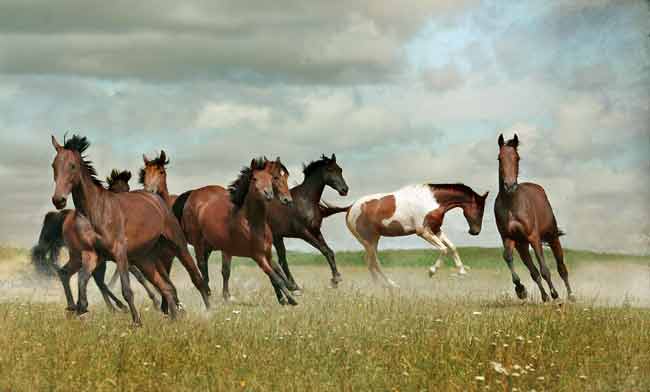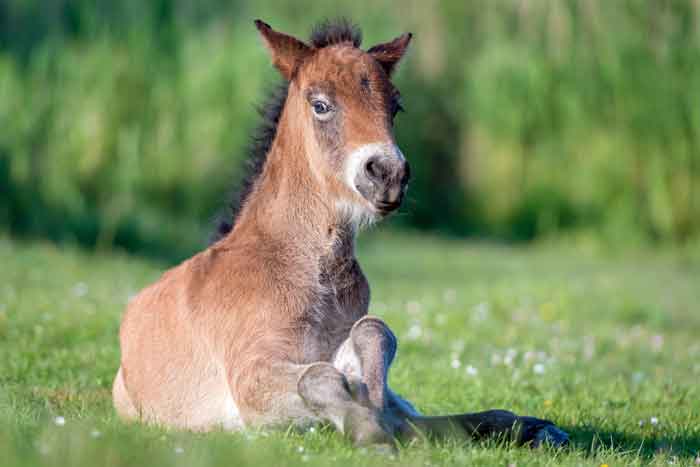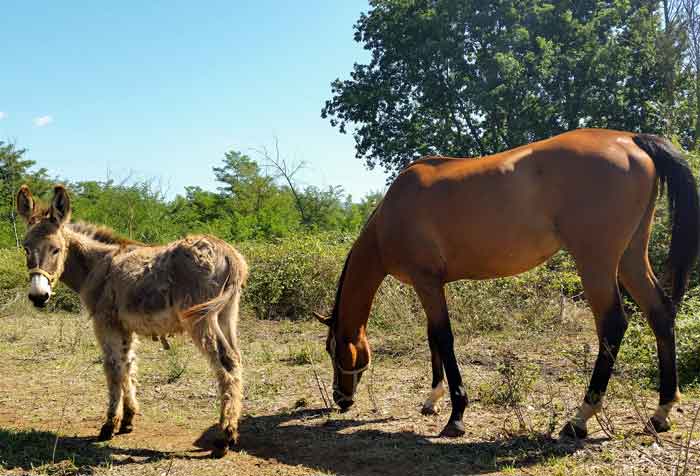Wild mustangs are wonderful. But what are the rules regarding them and can they be tamed?
Here’s everything you need to know about taming wild horses. How you go about it and what you are allowed to do.
Table of Contents
Can A Wild Horse Be Tamed And Domesticated?

A wild horse can be tamed and domesticated with careful training. All horses can be tamed when given the right proper training. Basic training can be done in around a month’s time by an experienced handler. Hereafter the horse can be ridden by experienced riders.
As you probably know, the temper and mind of a horse vary from horse to horse. Some horses get it more quickly while others take a longer time. That’s not really that different from domesticated horses (or humans for that matter).
It depends on several factors.
A special bond is formed between the wild horse and the handler and sometimes the first process only takes hours.
Now the trainer will be able to start teaching the animal to carry the rider and respond to leg and vocal commands. It needs to be taught a list of basic commands in order to be ridden by people other than the trainer.
Wild horses can be adopted through a special adoption program that lets you train the horse for 12 months and then you can own the horse.
How long does it take to tame a wild horse?
A skilled trainer can ride a wild horse after a few hours. During the next 4-6 weeks of intense daily training, a horse can learn to be ridden by riders with some experience. To become fully trained and ready to work with a beginner, you should expect several months of training.
It takes a lot of practice to be able to tame a wild horse from scratch. The first couple of hours is spent establishing some initial trust and respect between the horse and the person.
The horse needs to know who’s boss, so to speak. They are used to having a leader of the flock and they actually enjoy working with a master.
This is simple genetics. Horses have a flock mentality that makes it possible to train them. Zebras, on the other hand, are related to horses but they do not have this will to follow a leader.
Are You Allowed To Catch A Wild Horse?
You are not allowed to catch and keep a wild horse. They are protected and owned by the Bureau of Land Management. Instead, you can contact them and ask to adopt a wild horse. That is possible in many cases.
If you happen to adopt one you will have the opportunity to train and tame it yourself.
That can be a wonderful experience and you will definitely form a special bond with the horse. You will get the opportunity to teach and learn with the horse for 12 months.
But you will need some basic training yourself before you can teach the horse. There are several equine training programs across the country where you can learn the basic skills and try to work with a wild horse. It’s important to know what you are doing in order to tame the horse and from a good connection.
You will have to contact blm.gov.
How to get a wild horse to come to you
You need to approach it slowly and be very calm. There’s no point in trying to catch it quickly or trick it. It needs to trust you and let you come close by itself.
You can sometimes lure it to approach you with an apple or two. Horses love apples. But you should also approach it and not just wait for it to come over to you. You need to show initiative in order to master the situation. It needs to know you are in control. Horses are flock animals and they will let you be the master.
Bring the halter and let the horse see it from the beginning. It needs to see it in order to let you put it on.
You will need to approach the horse from the front. You cannot sneak up on it from the back because it will see you. Even if you did manage to sneak up on it from the back it will not work with a “surprise attack”.
When you approach it you should do so from the side so it can see you at all times. Horses have blind spots directly in front of the nose so you should come from the side. When you are close enough you can gently tough the shoulders while staying visible. It needs to get familiar with your smell and touch.
4 Stages To Taming A Wild Horse
When you first start out with a wild horse it will have to go through some basic and initial training. It follows these four stages:
- Green Broke
In this stage, you teach the basic things like mounting on a saddle and carrying a rider for the first time. - Broke
The horse is getting some experience now and an experienced rider will be able to have a good time riding the horse. It will still cause trouble and have too much of its own will but overall it is starting to get it. It will know a good deal of vocal and leg commands and mostly listen. - Well Broke
Now we have reached a point where the horse can be ridden in more public areas. The horse is much more confident with a rider on the back and it can even be ridden by riders with less experience. It should be very respectful at this point and you can trust that it will do as you say. This is actually the level of training and experience you find with many domesticated horses. - Dead Broke
This is the highest level of training any horse can have. Not all horses might be able to reach this level. Now it’s completely safe to ride for any beginner and it will be very patient and never cause you any trouble on the road or in the stall. You can even trust that it will behave well in stressful and intense environments and situations.
So let’s take a closer look at how to take the wild horse from being completely wild to green broke.
Do wild horses still exist in the US?
We have several states with wild horses here in the States. The wild horses actually found in pretty large flocks and you can observe them in many areas.
There are Mustangs in several states:
- Nevada
- California
- Oregon
- Utah
- Montana
- Wyoming
They are all protected by the Bureau of Land Management which is protected by Congress.
The wild mustangs are actually descendants of horses that were once domesticated. They are actually more correctly described as “feral horses”.
What’s The Difference Between FERAL Horses And WILD Horses?
Wild horses are horses that do not have domesticated animals as forefathers. The wild horses we find in the U.S today have domesticated horses as ancestors and are therefore categorized as feral horses. Feral simple means that the horses are untrained and live in the wild.
Feral horses are horses that live in the wild. They appear to be truly wild horses but in fact, they have domesticated horses as forefathers.
The truly original wild horses in the U.S came from Colonial Spanish horses. But they were eventually all captured and domesticated.
So the horses you find in the wild today are referred to as “feral horses” which means wild and untrained.
That being said, the horses we find roaming around in the wild are behaving as truly wild horses, despite having domesticated horses as ancestors.
Are Wild Horses Dangerous?
Wild horses can be dangerous if they are not handled correctly. A kick from a horse is very dangerous so you should never sneak up on a horse either in the wild or in the capture.
Wild horses should not be approached by amateurs because you need to know how to handle a wild horse.
That being said, you will probably be just fine as long as you remember these ground rules:
- Never sneak up on a wild horse
- Let it see you at all times
- Approach it from the front
- Bring an apple
- Let it smell you






